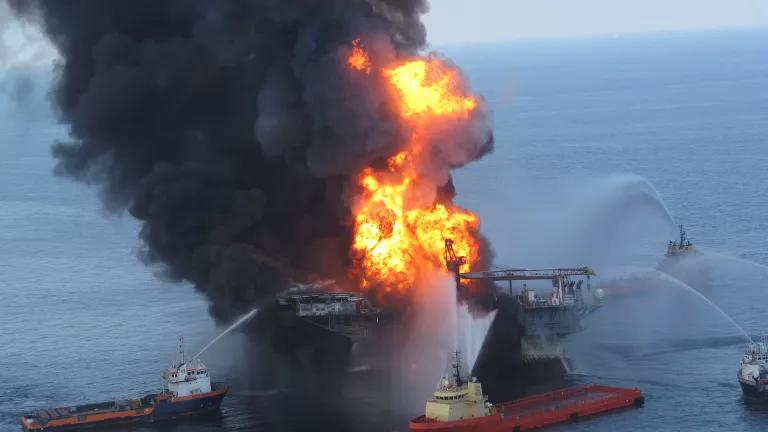
In April 2010, the oil drilling rig Deepwater Horizon spilled as much as 4.9 million barrels of oil into the Gulf of Mexico. This disaster was a devastating example of the dangers of offshore oil drilling; it killed 11 workers and injured 17 others, pushed critically endangered marine species toward extinction, and cost local economies billions of dollars. Unfortunately, there are also smaller oil spills all the time that risk human health and damage the marine environment. Moreover, offshore drilling requires significant onshore infrastructure, such as pipelines and refineries, that change the character of seaside communities, hasten the loss of wetlands, and heighten the impacts of storm surge and sea level rise.
Despite these dangers—and even though the majority of Americans agree that we should prioritize renewable energy over fossil fuels—the current administration continues to try and roll back protections against offshore oil drilling while pushing to expand it into nearly all our ocean waters. We must protect our coasts and push for clean, renewable and efficient energy that will protect our lifegiving oceans, the communities that rely on them, and our climate by helping us transition off oil.




